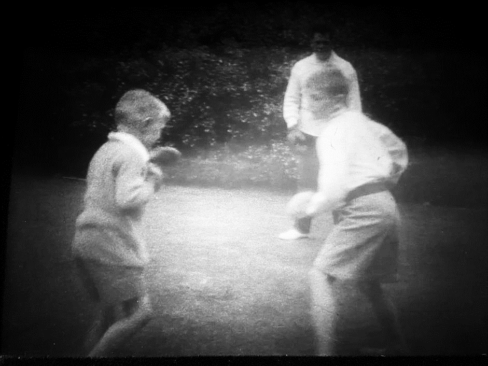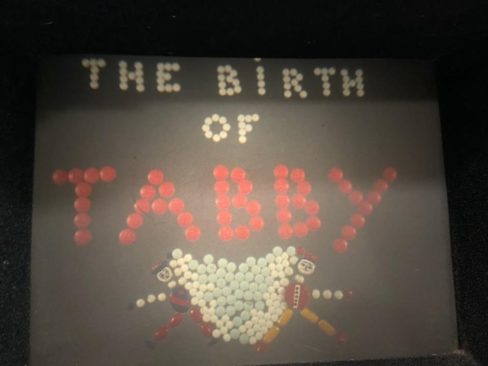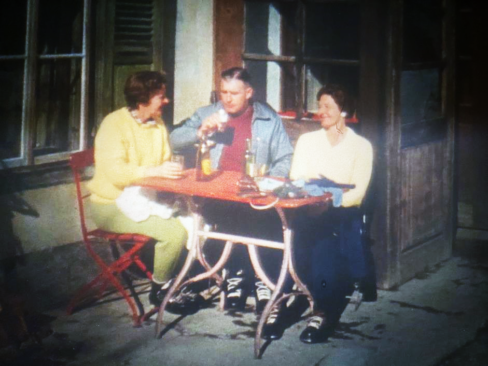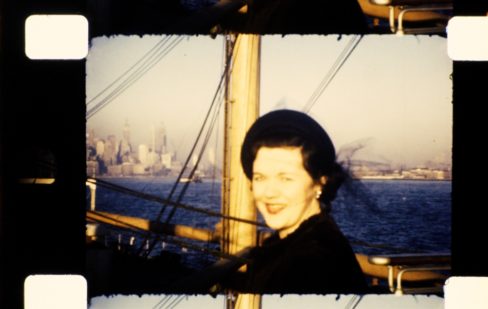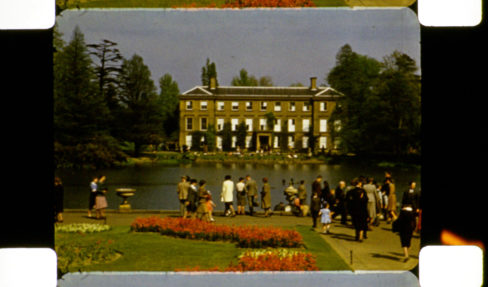 Cinema Museum Trustee Jon Davies talks about searching for gems in the Museum’s collection of 16mm home movies.
Cinema Museum Trustee Jon Davies talks about searching for gems in the Museum’s collection of 16mm home movies.
During the COVID pandemic The Cinema Museum was closed to the public for 18 months, but this unfortunate closure did create some opportunities. One never-before-seen chance was to start cataloguing our collection of home movies as donated to us over the years.
With my background as a film editor and historian, and armed with a fan heater against the cold, I was able to spend many happy hours opening can after can of film whose contents had been until then a mystery. And the task has continued! So far, I’ve viewed and annotated over 400 cans of 16mm home movies, and I have a fair number still to do.
The contents of each can is different, and that has been a delight of the task. Admittedly, there are a lot of long shots of “Junior on the Beach”, “This Year’s Roses” (not moving) or “Our Dogs Playing in the Garden” but there are also many gems in there too.
All of these films are 16mm, a semi-professional gauge, and they are often shot on lovely unfaded Kodachrome colour stock. Particularly pre-war, making home movies was the hobby of the well-to-do, so we can now see an intriguing glimpse into the lives and travels of the wealthy, with servants in uniform flitting in and out of frame, and the children out on the lawns preparing to run the Empire:
This has been a wonderful detective job. Many of the films come without titles or labels on the cans, so it is a matter of my looking for clues in the background in order to identify the contents. In one reel, the wife is reading a Penguin book. With the use of a magnifying glass, I was able to name the book (Wild Strawberries) and date the film to after its publication in 1934. I then found a newspaper billboard in the back of a shot and by tracking the headline, I was able to date the film precisely to 1937. In other instances, I have been able to track down the families, or at least their descendants, and in exchange for a donation to the Museum we have made them a digitised copy of their film. Sometimes this has led to some really moving discoveries. We have a series of home movies made by the same family from 1936-39 watching the children swim and play as they grow up. A little research discovered that the eldest son was to die in the RAF in 1944. And there is a wonderful animated/live action Christmas story for children made in the 1930s:
Or there’s this animated adventure of Tabby the Tablet:
And there’s a holiday movie that casually captions a beach scene in the West Indies as including the newly married Prince George and Princess Marina (look him up on Wikipedia and be amazed!).
As the films grow more modern, they start including sound and captioning. The quality varies from having been shot almost professionally to the more usual poor exposure and focus and a tendency to wave the camera round like a semaphore flag. And, watching the reels that have been donated to us in lots, I get to know the filmmakers and their habits: for example there’s a couple who always visit a zoo wherever they go, or there’s the military doctor in Scotland filming his family and their day-to-day lives. Here is a threesome of friends who toured Europe in the 1960s with car and caravan, in a rare shot where the people actually also appear:
Sometimes the quality of these films is astonishing, and they deserve to be shown more widely. For example, a visit on the Queen Elizabeth to New York and then by train to Los Angeles in 1947 offers an exquisite glimpse of America immediately post-World War 2:
So, each home movie film is being repaired and now has a detailed log sheet, plus I’ve made a public access list for film researchers looking for material. The cans can keep coming!
A few top things I’ve enjoyed:
- Cars being hoisted on to pre-war freight ships to get over to The Continent
- 1960s Camping sites in Italy (all human life etc)
- Footage of Old London and Old New York in colour
- The British Empire in the 1920s – fascinating echoes of a different world
- Life on board vintage passenger liners en voyage to faraway lands – Quoits, anyone?
- Colour film of Kew Gardens in 1942 where despite wartime rationing, people are epitomising ‘keeping calm and carrying on’
- Well-to-do folk of 1936 voyaging on freighters combining high class living with the import and export of everyday goods. So we see interesting film of toffs sipping G&T next to the loading of bananas in the West Indies.
Things I really don’t want to see any more of include:
- Gondolas in Venice
- Children building sandcastles
- Drooling dogs in the garden (or anywhere really)
- Flower beds and endless shots of static plants not moving
- Close ups of airport runways on take-off and landing

